The Organic Farm provides plants using seed varieties that have been tested on our farm in Portugal Cove, Newfoundland. We have been comparing varieties for over thirty years. The seedlings we sell are grown on the farm and represent the best of the varieties we have tested as long as the seeds remain available.
Soil Conditions
Soil conditions are as important as seedling choices in determining success. Since the soil on the Avalon Peninsula is often both sandy and rocky, it is important to make sure the organic content of the soil is high. Adding either home made or store bought compost to the soil is the simplest way to make sure that the soil has organic content that seedlings can use. We recommend getting your soil tested at the Provincial Soil Laboratory and following their amendment recommendations.
Spacing & Weeds
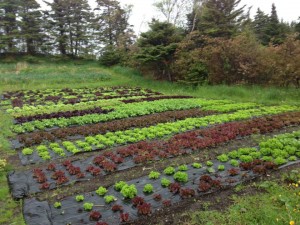 One of the secrets for healthy plants is to provide each seedling adequate space. Not only does planting seedlings too close cause unneeded competition, so do weeds. Keeping plants far enough apart and weed free reduces insect damage and competition for nutrients. For example, the Organic Farm does not plant sunflowers within 3-4 feet of vegetables because they are heavy feeders and rob nutrients from surrounding plants.
One of the secrets for healthy plants is to provide each seedling adequate space. Not only does planting seedlings too close cause unneeded competition, so do weeds. Keeping plants far enough apart and weed free reduces insect damage and competition for nutrients. For example, the Organic Farm does not plant sunflowers within 3-4 feet of vegetables because they are heavy feeders and rob nutrients from surrounding plants.
PLANTING INSTRUCTIONS BY TYPE
Broccoli. 45 cm (18 inches) apart in all directions.
Cauliflower. 45 cm (18 inches) apart in all directions.
Celery. 30 cm (12 inches) apart in all directions.
Chives. 30 cm (12 inches) apart in all directions. Likes sweet soil.
Cucumbers (greenhouse varieties). Plant 45 cm (18 inches) apart in rows that are separated by 1 meter (39 inches). Train to climb ropes. Pruning cucumbers is complicated. Use internet for pruning instructions.
Cucumbers (outdoor varieties). May be grown in hills (4 plants per hill, hills 1 meter (39 inches) apart in all directions or in rows 1 meter (39 inches) apart with a 30 cm (12 inch) spacing within the rows.
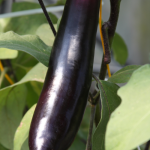 Eggplant (likes a potassium rich soil). Plant 45 cm (18 inches) apart in rows that are separated by 1 meter (39 inches). No need to prune.
Eggplant (likes a potassium rich soil). Plant 45 cm (18 inches) apart in rows that are separated by 1 meter (39 inches). No need to prune.
Kale. 45 cm (18 inches) apart in all directions.
Leek. 15 cm (6 inches) apart in all directions.
Mint. 30 cm (12 inches) apart in all directions. Mint is a perennial that spreads quickly. Plant in large pots or an isolate bed.
Onion. 15 cm (6 inches) part in all directions.
Parsley. 23 cm (9 inches) apart in all directions.
Perennial Herbs. 30 cm (12 inches) apart in all directions.
Peppers (likes a potassium rich soil). Plant 45 cm (18 inches) apart in rows that are separated by 1 meter (39 inches). No need to prune.
Pumpkin, bunch or vine type. Can be planted in hills or rows. Hills should be 1.75 meters apart in all directions with 3 or 4 plants per hill. When planted in rows, plants should be 1 meter apart in all directions. Protect from frost.
Squash. Can be planted in hills or rows. Hills should be 1.75 meters apart in all directions with 3 or 4 plants per hill. When planted in rows, plants should be 1 meter apart in all directions. Protect from frost.
Swiss Chard. 30 cm (12 inches) apart in all directions. Pick lower leaves continuously during the season.
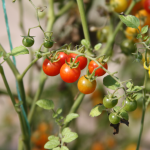 Tomatoes – Greenhouse (likes a potassium rich soil). Plant 33 cm (13 inches) apart in rows that are separated by 1 meter (39 inches). Individual plants will grow well in 5 gallon beef buckets. The greenhouse tomatoes we sell are indeterminate which means they will need to run up ropes and be pruned regularly to eliminate side shoots. If pruning is not familiar, look up how to prune on Internet.
Tomatoes – Greenhouse (likes a potassium rich soil). Plant 33 cm (13 inches) apart in rows that are separated by 1 meter (39 inches). Individual plants will grow well in 5 gallon beef buckets. The greenhouse tomatoes we sell are indeterminate which means they will need to run up ropes and be pruned regularly to eliminate side shoots. If pruning is not familiar, look up how to prune on Internet.
Tomato – Outdoor Bush Tomatoes (like a potassium rich soil). Plant 2/3 meter (26 inches) apart in all directions. No pruning necessary. Pick off dead lives and ripe tomatoes throughout the season. Protect from frost.
Tomatilloes – can be grown in greenhouses or outdoors (like a potassium rich soil). Plant 2/3 meter (26 inches) apart in all directions. Protect from frost. Can be planted outdoors on a fence or other trellises for support. Tomatilleos planted in a greenhouse must be pruned to control spread.
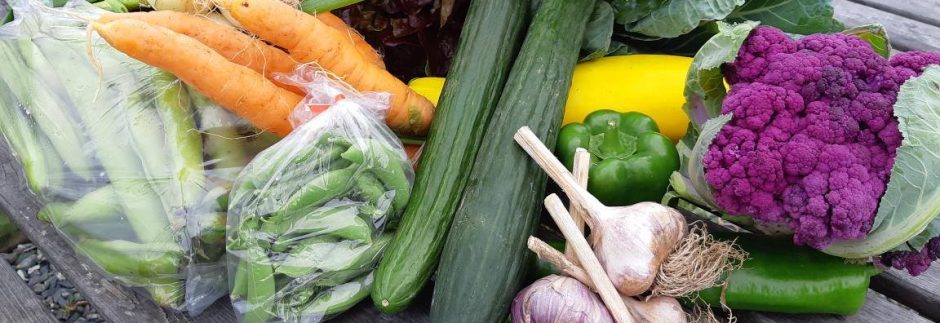
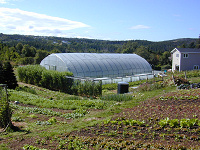
 A special message from Mike Rabinowitz: Celebrating the Life of Melba
A special message from Mike Rabinowitz: Celebrating the Life of Melba